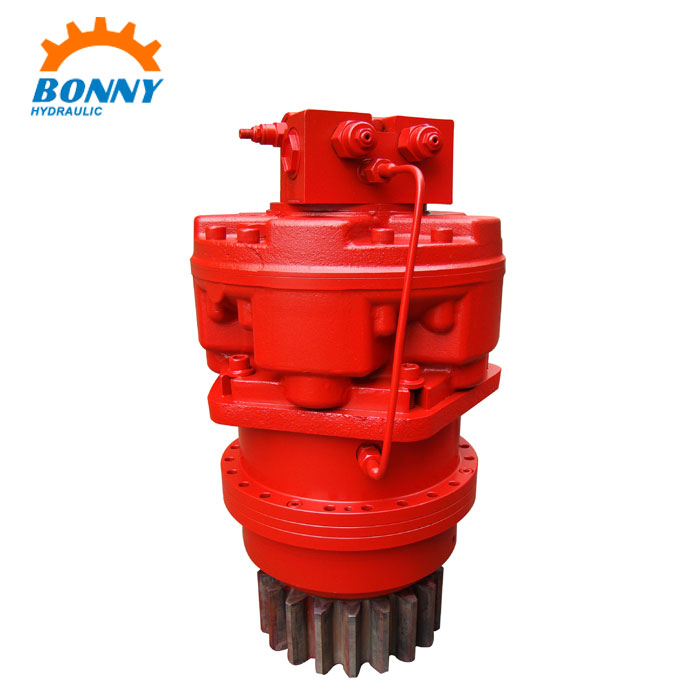 English
English Español
Español  Português
Português  русский
русский  Français
Français  日本語
日本語  Deutsch
Deutsch  tiếng Việt
tiếng Việt  Italiano
Italiano  Nederlands
Nederlands  ภาษาไทย
ภาษาไทย  Polski
Polski  한국어
한국어  Svenska
Svenska  magyar
magyar  Malay
Malay  বাংলা ভাষার
বাংলা ভাষার  Dansk
Dansk  Suomi
Suomi  हिन्दी
हिन्दी  Pilipino
Pilipino  Türkçe
Türkçe  Gaeilge
Gaeilge  العربية
العربية  Indonesia
Indonesia  Norsk
Norsk  تمل
تمل  český
český  ελληνικά
ελληνικά  український
український  Javanese
Javanese  فارسی
فارسی  தமிழ்
தமிழ்  తెలుగు
తెలుగు  नेपाली
नेपाली  Burmese
Burmese  български
български  ລາວ
ລາວ  Latine
Latine  Қазақша
Қазақша  Euskal
Euskal  Azərbaycan
Azərbaycan  Slovenský jazyk
Slovenský jazyk  Македонски
Македонски  Lietuvos
Lietuvos  Eesti Keel
Eesti Keel  Română
Română  Slovenski
Slovenski  मराठी
मराठी  Srpski језик
Srpski језик
The Versatility of Hydraulic Transmissions
2024-05-28
When it comes to transmitting power efficiently and with exceptional control, hydraulic transmissions emerge as a technological marvel. These remarkable systems utilize the properties of fluids to transfer power from a prime mover, like an engine, to driven components, propelling a wide range of machinery. Unlike traditional gearboxes, hydraulic transmissions offer a unique blend of smooth operation, variable speed control, and the ability to handle high torque loads.
At the heart of a hydraulic transmission lies a simple principle: the transmission of force through an incompressible fluid. These systems typically consist of two key components – a hydraulic pump and a hydraulic motor. The pump converts mechanical energy from the engine into pressurized hydraulic fluid. This pressurized fluid then travels through a network of valves and piping to reach the hydraulic motor, where it is converted back into mechanical energy, driving the wheels or other mechanisms of the machine.
The true brilliance of hydraulic transmissions lies in their inherent versatility. Here's a glimpse into the diverse applications of these powerful systems:
Construction Machinery: Hydraulic transmissions are the workhorses of construction equipment, powering excavators, loaders, and cranes. The precise control offered by these systems allows operators to maneuver heavy machinery with exceptional accuracy and responsiveness.
Agricultural Equipment: From tractors and harvesters to balers and mowers, hydraulic transmissions play a vital role in modern agriculture. These systems provide the smooth, variable-speed operation needed for efficient farming tasks.
Industrial Applications: In factories and industrial settings, hydraulic transmissions power a vast array of machinery, from machine tools and presses to conveyor belts and robotics. Their ability to handle high torque loads makes them ideal for demanding industrial processes.
Material Handling: Forklifts, pallet jacks, and other material handling equipment rely on hydraulic transmissions for efficient lifting and maneuvering of heavy loads. The precise control offered by these systems ensures the safe and secure movement of materials.
Off-Highway Vehicles: Whether it's a forklift navigating a busy warehouse or a powerful all-terrain vehicle conquering challenging terrain, hydraulic transmissions provide the power and control needed for off-highway vehicles.
Hydraulic transmissions come in a variety of configurations, each tailored to specific needs. Some systems offer hydrostatic power transmission, where the speed and direction of the output shaft are directly proportional to the input controls. Other hydraulic transmissions utilize hydrodynamic principles, similar to those found in automatic car transmissions, for smooth power delivery.
While hydraulic transmissions offer numerous advantages, it's important to consider their maintenance requirements. These systems rely on clean, high-quality hydraulic fluid to function properly. Regular maintenance, including fluid changes and filter replacements, is crucial for ensuring the optimal performance and longevity of a hydraulic transmission.
In conclusion, hydraulic transmissions stand as a testament to human ingenuity. Their ability to combine power with precise control has revolutionized the operation of machinery across various industries. From the delicate movements of a construction crane to the brute force of an industrial press, hydraulic transmissions continue to be a driving force behind progress.







